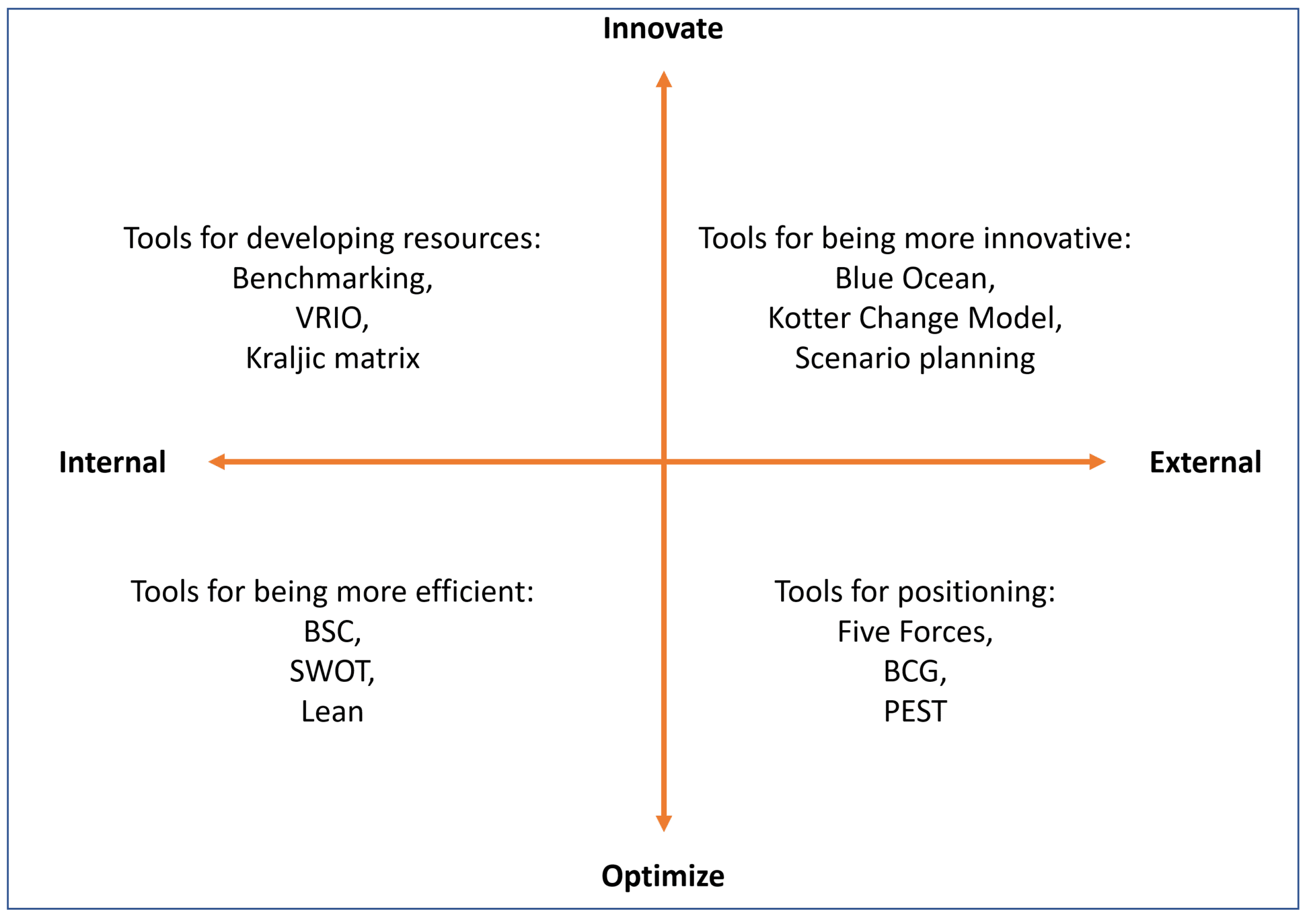I’ve been highly interested in strategy processes for a long time. My latest strategy-related post was Teal 2.0, where I simplified the relationship between organization function and structure.
While new strategy models are constantly born on top of the old ones, strategy consulting is a never-ending business. New strategies are mostly built on top of old theories. Usually, new business ideas fit into existing strategy frameworks. Therefore, it is useful to study the strategy consulting scene bottom-up. Still, one may tell endless war stories of winning strategies, but history doesn’t repeat itself.
What is strategy
Strategy means a higher-level plan. What is the mission, direction, and means to get there? Most of the bestselling business writers emphasize the meaning of strategy. Having a clear understanding of the purpose motivates and aligns actions. In reverse, people become miserable when operating without a clear meaning, direction, and focus. The strategy gives long-term, higher goals that motivate.
Even a good strategy needs and excellent execution; management and leadership. But if you have a lousy strategy, not even management and leadership help.
Overall, strategies are not about war or winning. Strategies are born to solve topical challenges. Strategy is about improving the situation in the long run. Strategy is about being efficient, smart, and in balance.
History
Even while talking about the history of business strategy one must mention that “strategos” meant a leader of an army in ancient Greek and the oldest strategy book being Art of War from Sun Tsu. Then we can move to the point.
Taylorism was born around 1911 when Taylor released his book The Principles of Scientific Management, which was the beginning of mass production. Reorganization of the production process through the assembly line, standardization, and the mass market is also called Fordism.
The so-called business strategy was born in the 1950s when corporations started growing after WW2. Ideas of customer centricity and strategic planning were driven by Drucker, Selznick, and Chandler. Ansoff started talking about market penetration and created his own Ansoff Matrix. In the 1980s Boston Consulting Group came up with the concept of portfolio theory and business units. Porter presented three generic strategies of cost, differentiation, and focus around the 1980s. Also, Porter’s ideas of five competitive forces made strategy work more analytical. Hamel and Prahalad presented the idea of core competencies in 1996. Kotter came out with his Change Model in 1995. Mintzberg brought different views into strategy consulting also bringing engagement, culture, organization lifecycle, and continuous learning into the discussion. Schwartz introduced scenario planning in 1991, which Risto Siilasmaa talked about highly in his book Transforming Nokia. Blue Ocean Strategy presented 2004 an idea of innovation being the strongest strategy. Viguerie, Smit, and Baghai explored the growth of large companies in their book The Granularity of Growth in 2008 and stated and the best way for them to grow or change direction is through mergers and acquisitions. In the Theory of Strategy from 2010, all the strategies are categorized under four factors.
Strategy Process – 3 Views
Strategy is classically viewed as a waterfall process: decide vision, set mission, choose a strategy, execute and measure. Based on the strategy lenses, we can argue if strategy work even is a process. Or just a collection of misc tasks. Still using a regular strategy process organization will run an annual health diagnostic on itself. And this makes sense. A modern strategy work can be seen to circle around three overlapping areas as presented by Johnson and Scholes in Exploring Corporate Strategy:
- Analysis can be done from numerous different standpoints, but the aim is to figure out how we are doing. For example, the SWOT tool is a concrete example of analysis.
- Options creation and choosing to focus on a certain one. What creates the competitive advantage? Here we are talking about the three generic strategies.
- Implementation of changes by motivating, engaging, and aligning people through communication, training, and follow-ups. Here we can use for example OKR as a tool.
However, again there are many concepts that overlap with all the above-mentioned areas. Lean covers all the three stages being an ideology and Balanced Scorecard overlaps with Options and Implementation. Or our own Gofore Spark framework, which covers all the aspects from strategic analysis and business renewal to maintenance and constant improvement.
Strategy Tools
Combining different strategy frameworks offers different viewpoints on the situation. Basically, strategy may have two targets:
- Optimize. Aim to be better and more efficient, by optimizing the system.
- Innovate. Aim to create and invent something different. Seek for a less competed business.
And strategy can be focused on:
- Internal processes and resources. This view focuses on improving internal resources and external networks.
- External view of industrial economics, where the external environment is being analyzed and reacted on.
Combining these four aspects gives us the classic four-table, which emphasizes the fact that you cannot serve all the standpoints at once; When you focus on optimization, you loose innovation. When you look inside, you loose outside view. Strategy work is always about making these decisions.

Picture: Four-table, which lists different aspects of strategy work and tools for these areas.
Timing is everything
Strategy work is always traveling in the dark. If the business opportunities would be loud and clear, everyone would be reaching for them. In highly competitive markets everyone is pursuing the same goals.
Strategy is also about timing. An opportunity may unfold itself at any moment; Innovation, new market, megatrend, the possibility for acquisition. Therefore, strategic thinking should be a continuous process that empowers everyone in the organization.
While strategy execution is about implementing the chosen options, the organization must also be able to replace its strategy at any moment. The biggest losses are not done while choosing the strategy but by sticking with the same strategy for too long. The COVID-19 was a brutal lesson on a sudden, global change. Dozens of similar megatrends are forecasted to be possible to happen. Still, nobody can predict them.
It is also good to remember that strategy work is more than just facts and rational thinking. Fashion clothes or SUV cars do not make sense and still, they are a huge business.
Strategy work is basically really simple
Consulting firms have their own theories and processes on how to create a strategy. Still, strategy work is basically really simple. Keep asking regularly these three main questions:
- Who is the customer? Remember to focus. The answer usually reveals itself when looking into the strengths and weaknesses of your own organization.
- What is the customer need you are solving? The better you are able to limit the problem, the better. The more painful the problem, the better.
- How you are solving the customer need? Dare to try. Usually, you cannot tell beforehand how your solution will work. Something that works in the USA may not work in the EU.
Check out also short video of corporate strategy and how Gofore can be analyzed from a strategic perspective.



